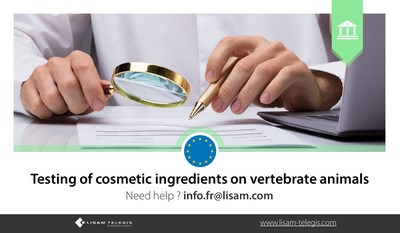Testing of cosmetic ingredients on vertebrate animals
Testing of cosmetic ingredients on vertebrate animals
lundi 21 septembre 2020
 In a press release of August 18th, 2020, the ECHA Board of Appeal adopted two major decisions related to tests on vertebrate animals for substances used exclusively as cosmetic ingredients.
In a press release of August 18th, 2020, the ECHA Board of Appeal adopted two major decisions related to tests on vertebrate animals for substances used exclusively as cosmetic ingredients. In order to comply with REACH, ECHA required the registrant to perform several toxicity studies for homosalate and 2-ethylhexyl salicylate, as well as an additional fish sexual development test for the second substance. The registrant argued before the Board of Appeal that, in the case of ingredients only intended to be incorporated into cosmetic products, ECHA cannot impose studies on vertebrates in order to meet toxicology registration requirements.
The Board of Appeal ultimately rejected both appeals, arguing that there is no such automatic exemption in the REACH Regulation, an outcome which is in accordance with the Cosmetics Regulation. As 2-ethylhexyl salicylate is suspected of being an endocrine disruptor, ECHA can require a fish sexual development test, in accordance with column 2 of section 9.1 of Annex IX.
Although in line with the documents previously published by ECHA about the interface between REACH and Cosmetics, these new decisions will definitively again feed the debate on animal testing in the world of cosmetics.
To find ECHA’s publications about animal testing and about the interface between REACH and the Regulation on cosmetic products, you may consult the following web pages (non-exhaustive list) :
• “Animal testing under REACH”
Under the menu « Replies to campains », see in particular the document “Cosmetics Regulation and REACH – questions and answers on animal testing” of September 2020
• “Clarity on interface between REACH and the Cosmetics Regulation” with the document ”Factsheet (Interface between REACH and Cosmetics regulations)” of 2014 which sums up the reasoning followed by the Agency.
